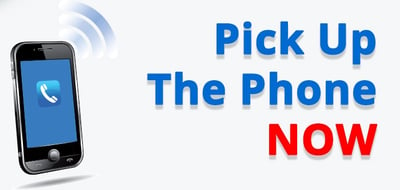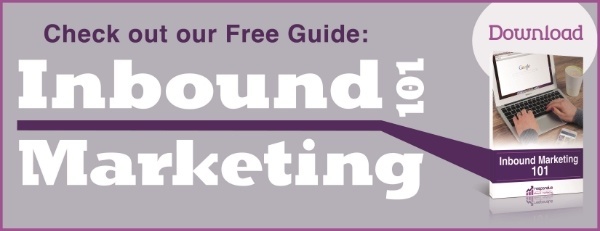One of the biggest differences between inbound and outbound marketing strategies is that with inbound; we’ve established that cold-calling does not work. People screen calls, ignore emails and put themselves on 'do not call' lists; there are over 200 million numbers on that list, by the way. People don’t want to be interrupted by messages that are not relevant to them.  Okay, so all of that makes sense. But if you’re creating high quality content and bringing leads to your company through inbound marketing strategies, how do you know when you should actually pick up the phone and call that prospect?
Okay, so all of that makes sense. But if you’re creating high quality content and bringing leads to your company through inbound marketing strategies, how do you know when you should actually pick up the phone and call that prospect?
Don’t Jump The Gun
You definitely don’t want to start pestering someone about sales before they are ready to actually buy. It’s a waste of time for your sales team, and if you call that prospect too soon you can turn them away from your company and may not be able to get them to come back.
Use information you have about past sales to guide you in setting up what your typical sales cycle looks like, such as how many pieces of content someone will view or download, and which pages on your website they check out. Based on this information, you will have a better idea of what a lead does and how they interact with the company before they are contacted by sales and convert into a customer.
Who Are You Talking To?
Consider who the prospect is within their company, as well as who they are personally. Are they a decision maker? Or are they the person gathering information that will then need to be approved by someone else? Are there multiple stakeholders for this purchase?
Before any sales call is made, you need to understand who your lead is, what their company and industry are like, and how you can add value for them. Knowing a few things about the person you are contacting can help to build a rapport, so don’t forget their name and what their job title is, even a hobby you may have in common can be helpful,. There is a fine line between being persistent and harassing someone, so establishing a protocol for how, and how often to contact someone is in your company’s best interest.
Nurture Your Leads
Lead generation is a lot of work, so don’t neglect your contacts and leads once you’ve acquired them. The leads in your database may not be ready for sales yet, but your marketing automation tool and CRM should work together to move leads through workflows that will help continue to educate them as they move along the purchase path.
[DOWNLOAD]

Read Between The Lines
It is necessary to monitor how your prospects have interacted with your company so far to determine if they are sales-ready. If someone is looking at content that is focused on sales, not just education, such as a pricing page or how to start a free trial, then they might be closer to a decision. If this is the first time someone has visited your blog, it’s too early to determine where they are in the buyer’s journey.
Follow the path of online evidence your leads are leaving behind. If they are downloading your content and checking out your website, then that's a sure sign you can call that prospect.
Set Up A Lead Scoring System
Setting up a lead scoring system for your company helps to make your sales team more efficient by prioritizing the database of leads; arrange them by leads that are most likely to become customers, based on how they have interacted with your company. Sales can then focus on prospects that are ready to buy. Your lead scoring and knowledge of your sales cycle should also help you to identify which leads will just never be ready to purchase. Ignore those and focus on the prospects with potential.
Use the demographic information you have gathered about your leads, including valuable data such as content viewed, forms completed and website pages viewed to assign a score to each lead, using points or whatever value you prefer. This will help you to determine the value of pursuing a lead before sending them to sales.
Unlike cold calling, once you’ve determined that a lead may be ready to talk with sales, they will likely be more open to speaking with you because they’ve already interacted with your company, read your content and know something about your product. Use this information to your advantage when you pick up the phone.
